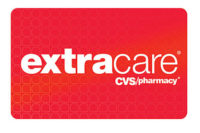Drug stores offer convenience, expertise
Herbal teas resonate during cold and flu season

Many health experts suspect that this year’s cold and flu season will go down as one of the worst in history. However, as consumers turn to doctor care for relief, drug stores are benefiting from prescription fulfillment as well as consumers seeking advice and products to help them manage their symptoms.
The cold and flu season even is impacting the beverage market. A Wall Street Journal article titled “Flu Fears Halt a Long Decline in Orange Juice Sales,” details that orange juice sales rose 0.9 percent to 38.66 million gallons in the four-week period ending Jan. 20, according to data from New York-based Nielsen. This was the first time since 2013 that Nielsen data showed a year-over-year increase for orange juice sales, the article pointed out.
Yet, juice sales are not the only beverage category that receives a boost during the winter months. According to a Nielsen’s Insights titled “Winter is Coming: How Americans Prepare for Cold/Flu Season,” consumers spend 28 percent more on herbal teas during cold/flu season compared with an average month, with these three months comprising 32 percent of annual dollars spent on herbal teas in drug stores, multi-outlets and convenience stores.
“Transparency plays a role in herbal teas as well. For example, varieties that called out specific benefits on the package gained dollars during cold/flu season. Compared to the average month, consumers spend 42 percent more dollars on herbal tea with an immunity claim on the label, with sales up 22 percent compared to the previous season,” the Insights states.
Herbal teas are not the only beverages resonating with drug store shoppers. New-age beverages and packaged coffee were No. 1 and No. 2, generating sales of $697 million and $223 million in U.S. drug stores, respectively, for the 52 weeks ending Dec. 30, 2017, according to Nielsen data. Shelf-stable juices and juice drinks amassed sales of $195 million for the same time period, while ready-to-drink teas experienced dollar sales growth of 14 percent, totaling $20 million, compared with the prior-year period, the data states.
Susan Viamari, vice president of Thought Leadership at Chicago-based Information Resources Inc. (IRI), highlights that beverages account for 5.9 percent of drug store channel sales. However, beverage dollar sales in the channel were down 5.9 percent in the past year, she adds.
Not all beverage categories were challenged within drug stores as shelf-stable non-fruit drinks (up 7.3 percent) and drink mixes (up 11.3 percent) posted year-over-year growth, Viamari says.
However, Viamari notes that the drug store channel is “missing the boat” on some of the largest, fastest-growing beverage categories, namely bottled water, which has seen a 5.5 percent gain in the multi-outlet and convenience channel (MULOC) compared with 0.9 percent growth at drug stores, and ready-to-drink tea/coffee, which has grown 5.2 percent in MULOC and 4.3 percent in drug stores.
Increased competition
When it comes to shopping, consumers continue to move between channels and retailers according to occasion, preference and products sought, experts note.
Additionally, when it comes to demographics, the drug store channel captures the highest share of spending among seniors and retirees, followed by older baby boomers. Millennials and Gen-Xers, on the other hand, tend to spend more of their dollars at mass/super channels and online, IRI’s Viamari says.
Los Angeles-based IBISWorld Analyst Christopher Lombardo also point to this trend. “Over the five years to 2017, the pharmacies and drug stores industry has exhibited growth despite some negative side effects from the regulatory environment and growing external competition,” he says. “The rise in the number of individuals aged 65 and over, in tandem with increases in spending on prescription medication, has led industry revenue to increase at an estimated rate of 1.7 percent to $270.6 billion.”
To drive sales within the drug store channel, Viamari suggests that cross-promotion could drive value and basket sales. She also suggests that drug store marketers acclimate to the omnichannel marketplace.
“Drug store marketers must invest to understand how their online and brick-and-mortar presence can work in harmony to offer consumers the ideal shopping experience,” Viamari explains. “This means balancing convenience, assortment, value, etc., across both worlds (online and offline) to meet the consumer where he/she is … at the price he/she is willing to pay throughout each and every shopping trip mission.” BI
Looking for a reprint of this article?
From high-res PDFs to custom plaques, order your copy today!





